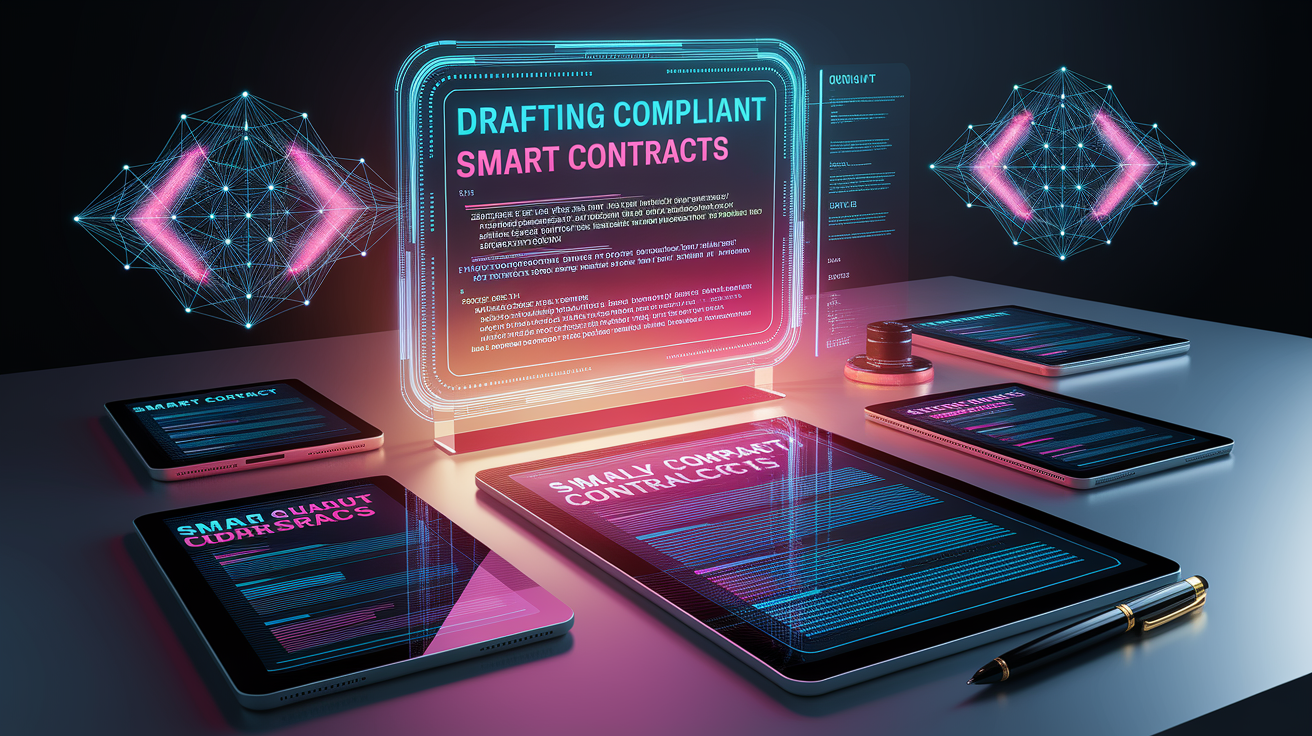Understanding smart-contracts-blockchain-legal-basics
At first glance, the concept of a smart contract might feel like standing at the bottom of a mountain with no climbing gear—impressive, towering, and daunting. But let’s unpack it together so the path upwards becomes clearer. A smart contract is essentially a self-executing digital agreement. The “terms” are written directly into computer code, and the contract runs on blockchain technology—that is, a decentralized and distributed ledger verified by multiple computers in a network.

The blockchain ensures each transaction is secure, transparent, and immutable (meaning it can’t be changed once recorded). Think of it like a vault where every step in a process is locked in permanently. When certain conditions are met, the contract executes itself automatically. No intermediaries, no delays—just pure automated execution.
However, in the legal world, this autonomy introduces new challenges. You may wonder: Are smart contracts legally binding? The answer depends on jurisdiction, electronic signature laws, and whether contract terms are legally sound when encoded. These factors form the foundation for understanding smart-contracts-blockchain-legal-basics.
Setting Up Your Smart Contract Environment
Before you can draft anything, you need your technological “workbench.” This is your smart contract environment—a combination of tools, programming languages, and blockchain networks. The choices you make here will shape what’s possible.

- Pick a Platform: Ethereum is the most popular and uses Solidity, a programming language tailored for these contracts. Alternatives like Hyperledger and Polkadot have their own strengths and governance models.
- Learn the Language: Solidity’s “if/when…then…” logic is at the heart of automated contract execution. Understanding its syntax is like learning the grammar of a foreign legal language—necessary for precision and enforceability.
- Development Tools: Tools such as the Ethereum Virtual Machine provide the secure sandbox where your contracts are executed and tested before going live.
In legal terms, this setup phase is akin to preparing the courtroom documents—the more accurate and complete they are, the smoother your proceedings will be.
Drafting Legally Compliant Smart Contracts
Here’s where your legal compass kicks in. Drafting a smart contract is not just about code—it’s about embedding clear legal meaning into digital instructions. Imagine trying to translate a statute into binary: every clause must be unambiguous to both human lawyers and machine interpreters.

- Define Parties and Roles: Just as in traditional contract law, you must identify who is bound by the agreement—whether individual, corporate, or decentralized autonomous organization.
- Embed Plain Legal Language: Translate legal jargon into explicit, conditional code statements. Once deployed, changing terms is extremely limited due to blockchain’s immutable ledger.
- Include Fallback Clauses: Hybrid contracts—part code, part text—can preserve flexibility for dispute resolution or unforeseen circumstances.
Think of this step as constructing a bridge between the legal framework and the technical code. Without a solid design, the bridge collapses under real-world pressures.
Ensuring Regulatory Compliance
Compliance isn’t optional—it’s the safety helmet you wear while scaling the blockchain mountain. Regulators are still solidifying policies around smart contracts, so tread carefully.
- Know Your Jurisdiction: Blockchain crosses borders, but laws don’t. Identify the governing legal jurisdiction for your contract—this will impact enforceability.
- Follow Existing Laws: In many regions, electronic signature legislation and existing contract law still apply. Validate whether your smart contract meets these requirements.
- Address Specific Risks: Faulty code can cause unintended transfers. Smart contract audits, as recommended in legal compliance guides, help mitigate financial and reputational damage.
Statistics show that approximately 45% of blockchain projects face delays or legal disputes due to regulatory uncertainty. This makes proactive compliance work not just wise, but essential.
Benefits and Future Outlook of smart-contracts-blockchain-legal-basics
Why invest the effort? Because the potential rewards are transformative. Smart contracts streamline transactions, slash administrative costs, and eliminate much of the friction inherent in traditional agreements.
Key benefits include:
- Automated execution without intermediaries—saving time and expense.
- Immutable and transparent records for enhanced trust and reduced fraud.
- Global reach, enabling cross-border commerce without the need for local agents.
Looking ahead, smart contracts will increasingly underpin sectors like DeFi, supply chain management, real estate, and digital rights protection. As legal frameworks mature, expect broader adoption, more sophisticated hybrid agreements, and improved interoperability across blockchain networks.
For now, the climb may feel steep. But with the right preparation, technical environment, and legal awareness, you can reach the summit—and stand in a new era of contract automation built on blockchain’s solid foundation.







